
Gothenburg is the gubernatorial seat of Västra Götaland County in Sweden. It is the second-largest city in Sweden, after the capital Stockholm, and the fifth-largest in the Nordic countries. It is situated by the Kattegat on the west coast of Sweden, with a population of approximately 600,000 in the city proper and about 1.1 million inhabitants in the metropolitan area.

Liseberg is an amusement park located in Gothenburg, Sweden, that opened in 1923. It is one of the largest in number of visitors with about three million visitors annually. Among the noteworthy attractions is the wooden roller coaster Balder, twice voted as the Best Wooden Tracked Roller Coaster in the world in a major international poll. The park itself has also been chosen as one of the top ten amusement parks in the world (2005) by Forbes magazine and second best in Europe (2022) by IAAPA.
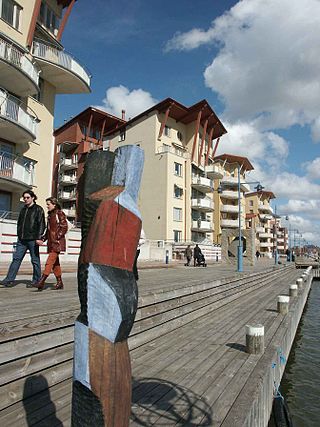
Hisingen is the fifth-largest island of Sweden, with an area of 199 km2 (77 sq mi). It is a river island, formed by the split of the Göta Älv at Bohus, and is defined to the east and south by the main arm of that river, to the north by the smaller arm, and to the west by the Kattegat. The southern part of Hisingen is extensively urbanised, representing the northern suburbs of the city of Gothenburg. The island is divided between the historical provinces of Västergötland and Bohuslän, but lies entirely within the modern county of Västra Götaland.

Scandinavium is an indoor arena located in Gothenburg, Sweden. Construction on Scandinavium began in 1969 after decades of setbacks, and was inaugurated on 18 May 1971.

The Stockholm Metro is a rapid transit system in Stockholm, the capital city of Sweden. Its first line opened in 1950 as the first metro line in the Nordic countries. Today, the system consists of three lines and 100 stations, of which 47 are underground and 53 above ground. The system is owned by Region Stockholm via SL, the public transport authority for Stockholm County. It is the only metro system in Sweden.

Tvärbanan is a light-rail line in Stockholm, Sweden. Its name translates literally to The transverse line, as it operates crosswise to the otherwise radial metro and commuter rail lines of Stockholm. It links together several transit lines through its connections with the southern, western and northern subway branches of the Stockholm Metro (Tunnelbana) as well as three branches of the Stockholm commuter rail (Pendeltåg). The possibility to travel between southern, western and northern greater Stockholm without having to enter the city centre significantly reduces the number of transit passengers, also reducing the number of trains having to pass through the Old Town bottleneck during peak hours. Near Liljeholmen the track is shared with freight traffic for a short section, this being the only place in Sweden where freight traffic and trams share the same track.

The Gothenburg tramway network is part of the public transport system organised by Göteborgs Spårvägar, controlled by Västtrafik in the Swedish city of Gothenburg. The system's approximately 160 kilometres (100 mi) of single track — making it the largest tram network in Northern Europe — is used by around 200 trams as of 2006, which serve twelve day-time and five night-time lines with a combined line length of 190 km. These figures are expected to increase when the second stage of Kringen is finished. The trams perform about 2,000 trips and cover 30,000 km per day. In 2018, 131 million journeys were made.

Sheffield Tramway was an extensive tramway network serving the English city of Sheffield and its suburbs.
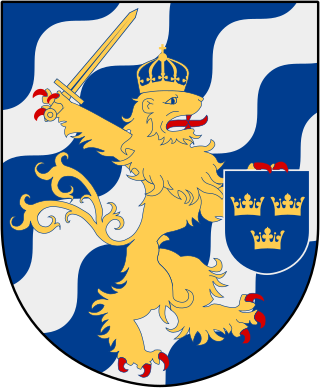
The history ofGothenburg begins with the foundation of the city in 1621, although by that time people had already been living in the area for thousands of years, since the Neolithic Period, and moreover there had already been a series of earlier settlements on the lower Göta Älv, including one which also bore the name Gothenburg.

The Z-class are single-unit bogie trams that operate on the Melbourne tram network. Between 1975 and 1983, 230 trams spanning three sub-classes were built by Comeng, Dandenong. The design was based on two similar Gothenburg tram models, and a prototype built by the Melbourne & Metropolitan Tramways Board. While the Z1 and Z2-class trams were very similar, the Z3-class had significant design changes.

Gothenburg Central Station is the main railway station of Gothenburg and it is the oldest railway station in Sweden still in use. The station serves 27 million passengers per year, making it the second largest railway station in Sweden after Stockholm Central Station which it predates by 13 years. The station opened on October 4, 1858. The station is situated in the city of Gothenburg, right by Drottningtorget. The Gothenburg Central Station, Centralhuset and Nils Ericson Terminalen are a part of Resecentrum, Göteborg. Gothenburg Central Station is owned and administered by Jernhusen.
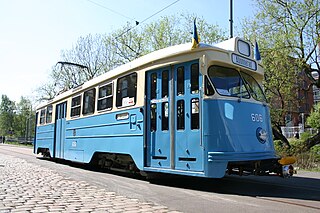
The M25 was a class of 125 four-axle trams built for use on the Gothenburg Tramway in Sweden between 1958 and 1962. The class was used in passenger service in Gothenburg until 1994, undergoing major rebuild to accommodate Sweden's switch from driving on the left-hand side of the road to the right in 1967. After they were withdrawn from service in Gothenburg, 36 members of the class were sold for use on the Oslo Tramway in Norway, where they ran from 1991 until 2002. In Oslo the trams were known as class SM91, and were numbered 264 to 299.

Norway/Vänern Line is a Y-shaped railway line in Sweden. The main section runs from Gothenburg Central Station to Kil Station, mostly along the west shore of Vänern. There is a branch from Erikstad to the Norway–Sweden border at Kornsjø, from where it continues as the Østfold Line to Oslo. The lengths of the line are 112 kilometres (70 mi) from Gothenburg to Erikstad, 180 kilometres (110 mi) from Gothenburg to Kornsjø and 232 kilometres (144 mi) from Gothenburg to Kil. The line is single track, except for the 82 kilometres (51 mi) section from Gothenburg to Öxnered, which is double track.

Lindholmen is a former island in the Göta Älv river, now part of the larger island of Hisingen, in Gothenburg, Sweden. Lindholmen was not attached to Hisingen until 1864, or perhaps even later, and the western part of the channel separating the two islands is preserved in the form of the inlet Sannegårdshamnen, which now functions as a marina.

Smiley was an American alligator that lived in captivity in the Maritime Museum of Gothenburg, Sweden. Smiley arrived in Gothenburg from the United States in 1924, at approximately the age of two, and died on 9 February 1987. She received the name "Smiley" in 1970 when the newspaper Expressen asked readers for appropriate names for the alligator. At the time of her death at the age of 65, she held the record of being the oldest living alligator in captivity, an honor that landed her a spot in the Guinness Book of World Records. At the time of her death Smiley weighed 75 kilograms (165 lb) and measured 265 centimetres (8.69 ft), which is small for North American alligators. Only after her death and necropsy did doctors establish that Smiley was a female.
The following is a timeline of the history of the municipality of Gothenburg, Sweden.
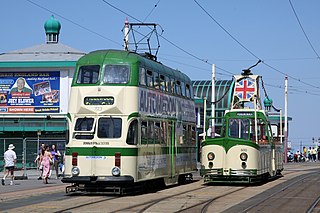
Blackpool Heritage Trams are a mixed fleet of restored vehicles that run on the Blackpool Tramway, which runs from Blackpool to Fleetwood on the Fylde Coast in Lancashire, England. The line dates back to 1885 and is one of the oldest electric tramways in the world. It is operated by Blackpool Transport (BT) and is the last surviving first-generation tramway in the United Kingdom. Excluding museums, it is one of only a few tramways in the world to still use double-decker trams.

Kronhuset, formerly known as Giötheborgz Tyghuhs, is a redbrick building in Västra Nordstaden in Gothenburg. It was constructed during the years 1643–1654 in a Dutch style, and is Gothenburg's joint-oldest secular building along with the Torstenson Palace. The royal architect Simon de la Vallée is believed to have designed the building. The Kronhus was originally used as an arsenal for the city garrison and as a granary to store food reserves so that the city could survive a siege. On December 9, 1927, the ownership of Kronhuset passed from the Swedish state to Gothenburg Municipality. It has been a byggnadsminne, a listed building, since 24 October 1968.
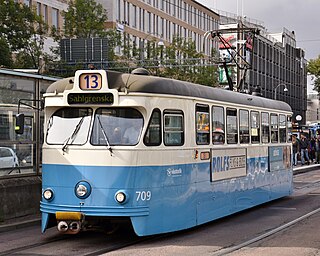
The M28 was a class of 70 four-axle trams built for use on the Gothenburg Tramway in Sweden between 1965 and 1967. The class carries fleet numbers 701-770, and was withdrawn from service in 2021.

M25 606 is a tram manufactured in 1961 by Hägglunds, commissioned by Göteborgs Spårvägar AB. The tram operated in regular service in Gothenburg, Sweden until 1988 when it was taken over by the Ringlinien tramway association. Ringlinien continues to operate the tram in museum service to this day.



















